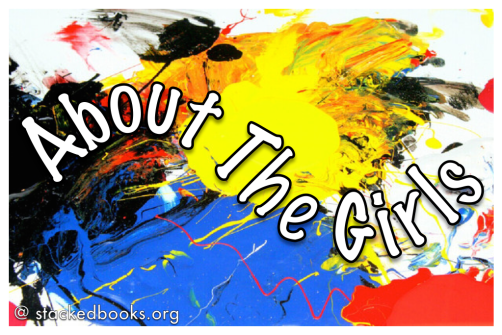Today launches a week-long series that began as an exploration of girls and reading, asking the question “what About The Girls?” This year’s take on the series goes a little bit in a different direction. There’s still a good deal of talk about girls and reading, but the topic focuses more on feminism, opening up discussion to bigger topics and those all along the gender spectrum.
The first piece in the series comes from Anna Breslaw.
Hi! I’m a New York-based freelance writer and author. Previously, I was a staff writer at Cosmo and a sex & relationships editor at Cosmopolitan.com. I’ve also been a contributing writer for Jezebel and Glamour.com.
My debut YA novel, Scarlett Epstein Hates It Here, is out now from Razorbill/Penguin.
____________________
When I was 14, I felt self-conscious every time I read the description of Jessica and Elizabeth Wakefield that opened every single Sweet Valley High book: “A perfect size six, with long blonde hair and blue eyes.” The year I graduated from high school, Twilight showed marginal progress by normalizing an Everygirl protagonist. Unfortunately, she was also a passive, helpless victim, caught in an abusive relationship that was framed as romantic.
The Hunger Games, which exploded just three years after that, was basically the backlash to Bella. Katniss was active, independent, a warrior who didn’t rely on anyone but herself. It worked because it subverted gender roles and tropes on multiple levels: Katniss’s journey is motivated by love, but for her little sister rather than a crush. She dreads her girly makeover in the Capitol, but ultimately bonds with her stylist and is surprised by how powerful she feels in her “dress on fire.” Peeta, the male love interest, was a gentle, domestic caretaker—but none the less sexy for it.
But many less-thoughtful ripoffs (I will not name names, because I am #classy) rely on a lazy, underwritten version of Katniss. Go to Barnes & Noble right now, and you’ll find countless dystopian YA books led by a “strong female character.” She knows how to fight. She doesn’t wear dresses. The opposite sex isn’t really a priority. She doesn’t care if people like her. Did I mention she knows how to fight?
Ironically, these are all heteronormative alpha-male attributes. A “strong female character” these days is pretty much a dude with a braid—sometimes even a misogynist one, scoffing at all those Other Girls™ who care about fashion and boys. As empowering as this trend may seem on the surface, it actually perpetuates the idea that conventional feminine traits are synonymous with weakness.
While the lexicon of female characters in YA has expanded over the years, the insistence that one type of girl is a more “worthy” heroine than others—and a reliance on easy commercial tropes over three dimensional characters—has remained the same. Teenage girls today are a lot smarter and more aware of their place in society than I was at their age, but I still worry that there’s some 14-year-old bookworm out there who mistakes macho posturing for female strength. Maybe it makes her feel ashamed that she does like dresses, that her feelings are hurt easily, or that she’s insecure, or that she cares what boys think, or that her biggest battles are fought on the inside.
Now more than ever, that girl needs to know that navigating these anxieties and contradictions are the things that make her strong. Simply being female in the world makes her a dystopian heroine.













